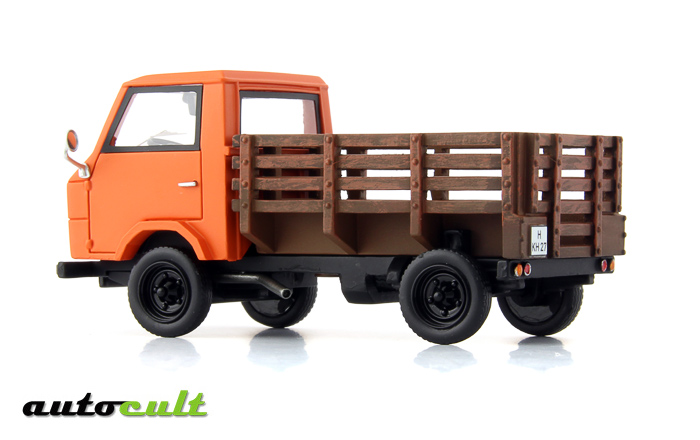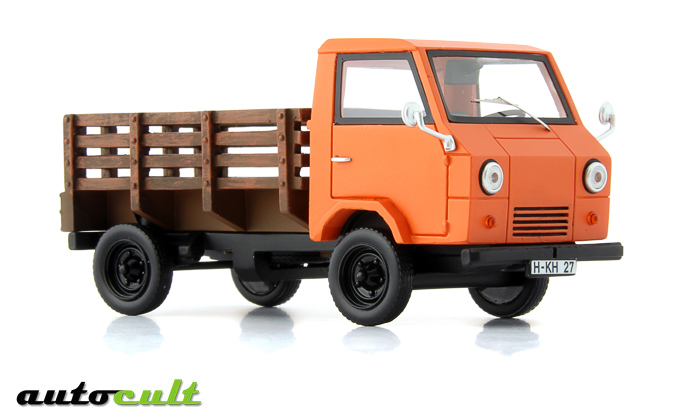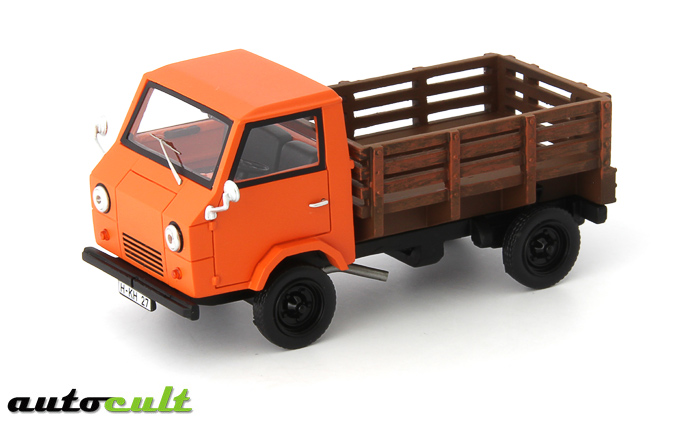|
Die gut gemeinte Idee Der Gedanke, ein Konzept für ein Auto zu entwickeln, das als ganz einfache Baukastenlösung überall auf der Welt montiert, repariert und auch mit herkömmlich verfügbaren Materialen ausgebessert werden kann, reifte zu Beginn der 1970er Jahre in der Geschäftsführung von Volkswagen zur Realität. Unter dem Begriff Entwicklungsauftrag – kurz EA – 489 bzw. der Bezeichnung Basistransporter ging dies in die VW-Historie ein. Bei der Motorenwahl griff man auf den bewährten Vierzylinder-Boxermotor aus dem VW-Käfer zurück, der seine Leistungsfähigkeit über Jahrzehnte bewiesen hatte, ausgereift war und auch mit einfachsten Mitteln repariert werden konnte. Dieser 1.584 cm³ große Motor mit einer Leistung von 50 PS wurde nun unter dem Fahrerhaus an der Vorderradachse eingebaut und trieb diese auch an. Die Fahrerkabine war spartanisch und kantig konstruiert. Dies hatte den tieferen Sinn, dass bei Ausbesserungsarbeiten kein speziell angefertigtes Teil benötigt wurde, sondern alle Teile mit einfachen Mitteln selbst hergestellt und eingepasst werden konnten. Die Teile sollten so einfach wie möglich sein, denn der Grundgedanke für die Wartung und Reparatur des Transporters sah auch kein Händlernetz oder VW- Stützpunkte vor. Eine Zuladung von 1.000 Kg (2205 lbs) und eine Höchstgeschwindigkeit von 85 km/h sollten für den geplanten Betrieb in Entwicklungsländern genügen. Für das Wolfsburger Volkswagenwerk war im Sommer 1973 die Arbeit beendet und als Abnehmer wurde sich VW mit den Ländern Finnland, Indonesien, Mexiko und der Türkei einig. Unter dem Vermarktungsnamen Hormiga – zu deutsch Ameise – folgte die Montage in Mexiko, in der Türkei hieß er schlicht EA 489, in Indonesien kam er unter dem Begriff Mitra auf den heimischen Markt und von dort wurde er auch an die Philippinen geliefert, wo er als so genannter „Country Truck“ in den Verkehr kam. In Finnland wurde er vom VW-Importeur Wihuri produziert. Von
den produzierten Stückzahlen dürfte man sich in der
VW-Chefetage insgesamt wesentlich mehr erhofft haben. Im eigenen
Werk lief die Herstellung zwischen 1977 und 1979 nach ca. 2.600
Stück aus und weltweit dürfte sich die Produktion bei
etwa 6.000 Exemplaren eingependelt haben.
The
well-meant Idea |
||
 |
||
|
L'idea di un progetto di un auto che poteva esser costruita, riparata e mantenuta con materiali convenzionali grazie ad una semplificata piattaforma modulare costruita intorno al mondo, divenne realtà negli anni 70 grazie alla Volkswagen. Lo sviluppo del EA489 chiamato “Basistransporter” fu un passo particolare nella storia della Volkswagen: come motore fu selezionato un quattro cilindri Boxer derivato dal VW Maggiolino, che da decenni aveva dimostrato la sua affidabilità e oltre ad esser avanzato tecnologicamente era anche molto semplice da riparare. Il motore, Cilindrata 1.584 cm³ e capace di erogare 50 CV, era installato sotto la cabina di guida sull'asse anteriore ed era spinto da essa. La cabina era costruita in maniera spartana e spigolosa, il significato profondo di questa scelta era la possibilità di riparare il mezzo in maniera molto semplice, tutte le parti del veicolo dovevano esser molto semplificate. Un carico di trasporto pari a una tonnellata e una velocità massima di 85 km/h dovevano esser sufficienti per le nazioni in via di sviluppo dove verrà venduto questo mezzo. Nell' estate del 1973 nella sede principale della Volkswagen, a Wolfsburg, il lavoro era quasi completato e la Vw giunse ad un accordo di vendita con i seguenti paesi: Finlandia, Indonesia, Messico e Turchia. L'assemblaggio inizió in Germania, a Wolfsburg, nella fabbrica principale della Volkswagen, successivamente fu assemblato in Messico, dove era venduto con il nome di Hormiga, Formica in Spagnolo, in Turchia fu venduto con il suo nome in codice: EA489, in Indonesia fu introdotto con la nomenclatura Mitra sul territorio asiatico e successivamente fu importato nelle Filippine, dove fu venduto con il nome di Country-truck. In Finlandia invece fu assemblato dall'importatore locale Volkswagen, Wihuri. La dirigenza della Volkswagen aveva sperato di produrre molte più unità prodotte, la produzione totale fu pari a 2.600 esemplari prodotti nella fabbrica principale di Wolfsburg tra il 1977 ed il 1979, e 6.000 esemplari prodotti intorno al mondo. |
||



